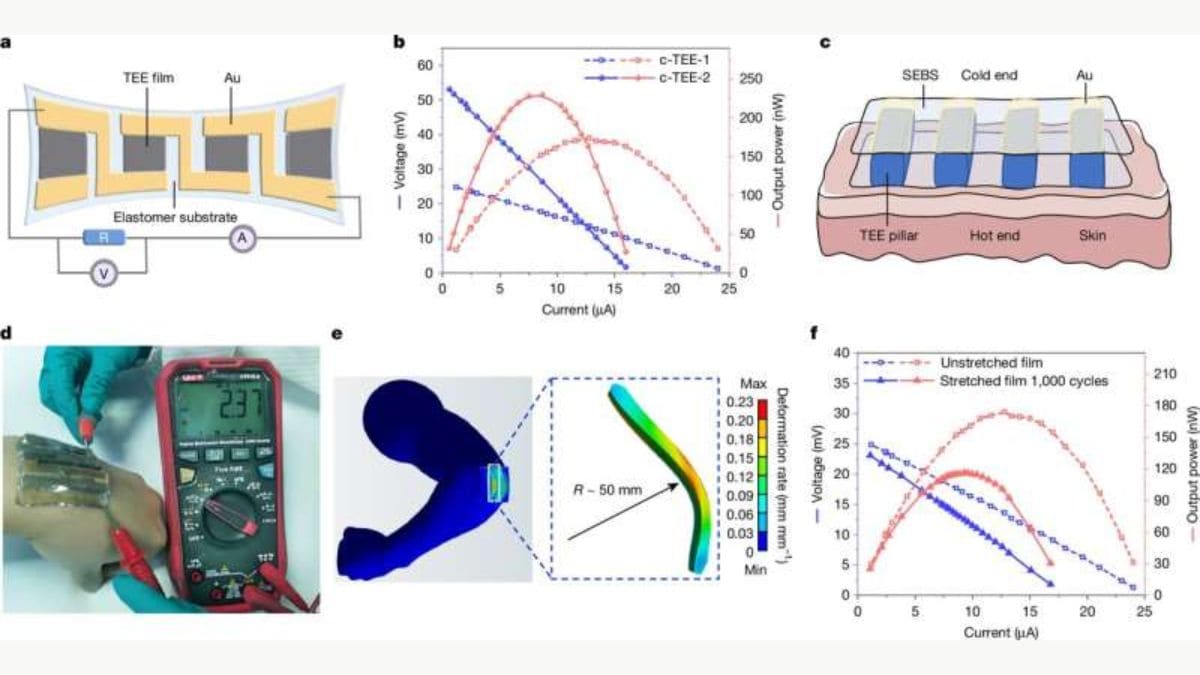Scientists at Peking University have developed a stretchy, rubber-like material that could mimic our ability to transform our body heat into electricity. This could result in wearable devices that don't have to be enormous to do any work. The study, published in Nature, states how the unique elastomer keeps its skin-like stretchiness and ability to convert energy effectively. What the material does is take the benefits of the natural temperature difference of human skin, about 37 degrees Celsius, and the surrounding air to produce electricity all the time. The advance could pave the way for a new generation of smart patches that can take people's temperatures, track their physical activity, and more, scientists say.
Stretchable Thermoelectric Rubber Band Powers Wearables and Medical Devices From Body Heat
According to the study published in the Nature journal, the team of researchers analysed how thermoelectricity, the movement of electrons from hot to cooler regions, can be harnessed using their elastic polymer composite. They reported that the material can stretch to 150 percent of its initial length and withstand strains of more than 850percent.
The fact that it remains stretched under stress means it remains in close contact with the skin, and that makes power generation more efficient, the researchers said. The elastomer was made even more effective — more conductive — by adding a special doping agent called N-DMBI.
n-Type thermoelectric elastomers with the characteristics of high mobility and good flexibility have been a big step toward gaining high performance, reported Tech Xplore. This is a property that allows the gas to keep working even when stretched a lot.
The material's performance, the researchers said, could give rise to the next generation of wearables and implantable electronics that rely on body heat to motivate themselves, sidestepping issues and risks related to batteries.
Research suggests a stretchy rubber band could power medical sensors, smart clothing, and health monitoring systems, paving the way for long-lasting, self-powered electronics.

Comments
Post a Comment